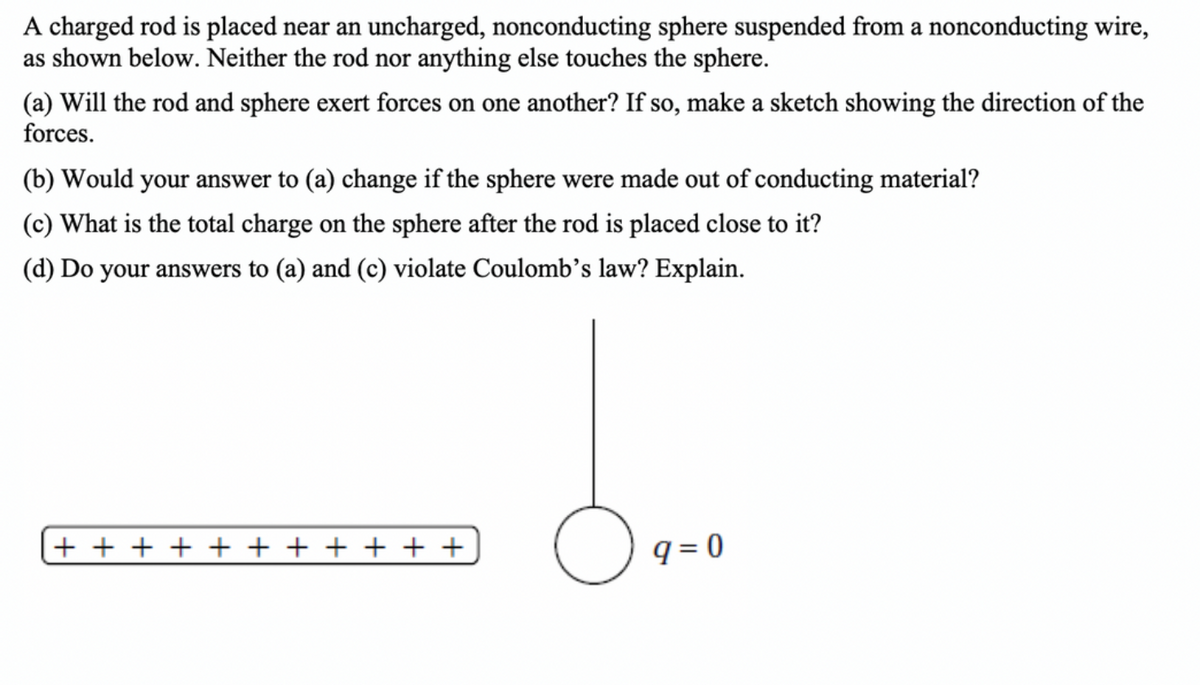A charged rod is placed near an uncharged, nonconducting sphere suspended from a nonconducting wire, as shown below. Neither the rod nor anything else touches the sphere. (a) Will the rod and sphere exert forces on one another? If so, make a sketch showing the direction of the forces. (b) Would your answer to (a) change if the sphere were made out of conducting material? (c) What is the total charge on the sphere after the rod is placed close to it? (d) Do your answers to (a) and (c) violate Coulomb’s law? Explain.
A charged rod is placed near an uncharged, nonconducting sphere suspended from a nonconducting wire, as shown below. Neither the rod nor anything else touches the sphere. (a) Will the rod and sphere exert forces on one another? If so, make a sketch showing the direction of the forces. (b) Would your answer to (a) change if the sphere were made out of conducting material? (c) What is the total charge on the sphere after the rod is placed close to it? (d) Do your answers to (a) and (c) violate Coulomb’s law? Explain.
Related questions
Question

Transcribed Image Text:A charged rod is placed near an uncharged, nonconducting sphere suspended from a nonconducting wire,
as shown below. Neither the rod nor anything else touches the sphere.
(a) Will the rod and sphere exert forces on one another? If so, make a sketch showing the direction of the
forces.
(b) Would your answer to (a) change if the sphere were made out of conducting material?
(c) What is the total charge on the sphere after the rod is placed close to it?
(d) Do your answers to (a) and (c) violate Coulomb’s law? Explain.
+ + + + + + + + + + +
q = 0
Expert Solution
This question has been solved!
Explore an expertly crafted, step-by-step solution for a thorough understanding of key concepts.
This is a popular solution!
Trending now
This is a popular solution!
Step by step
Solved in 2 steps
